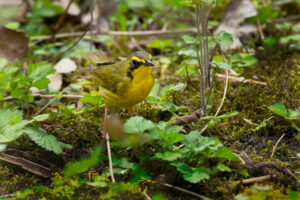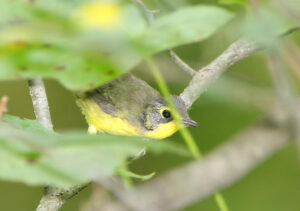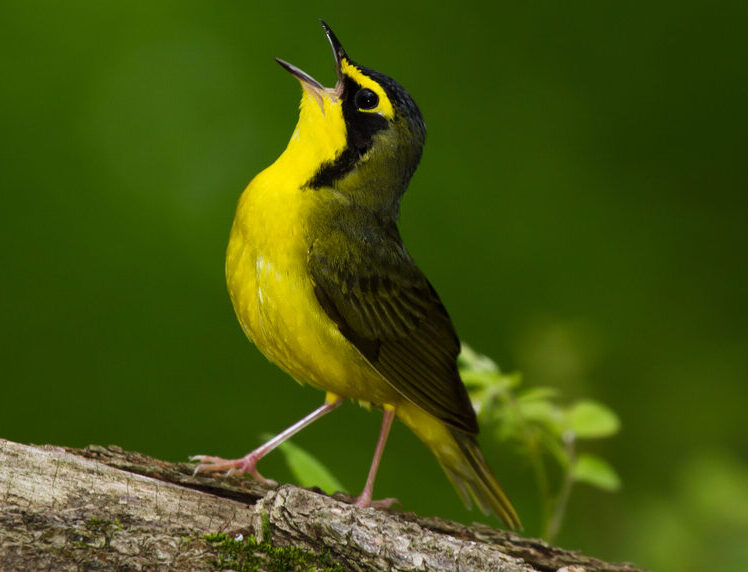Kentucky Warbler, Geothlypis formosa
Bill Rowe
It’s a fine day in June, and you are taking a hike through the woods on one of your favorite trails. After a while you begin to notice a recurring bird song—a vigorous chant with several upslurred syllables and a slightly rolling quality, repeated over and over, something like churree churree churree churree. After the fifth “listening experience” in the space of an hour, you take time to pause and look for the singer, and eventually, sure enough, there he is on an open branch, motionless except for his bill and throat as he repeats his song for you. You immediately know, from studying your field guide, that he is a Kentucky Warbler. He is such a bright yellow below that you wonder how you could have missed the earlier singers, until you realize that a combination of olive-green and yellow might make perfect camouflage in a leafy, sun-dappled forest understory, especially with birds that sit still and sing for minutes on end. The Kentucky is one of the most widespread warblers in the south and the middle Midwest, north almost to the Great Lakes—and that includes all of Missouri, although its stronghold is in the Ozarks and Ozark border counties, and it is more local to the north. Like most of our breeding warblers, they arrive in April or early May; then they pair up, mate, and build their nests right on the ground, often concealed among low-growing plants. By August they are ready to take off again for Middle and South America and the Caribbean, where they will spend the winter; relatively few are still around even in September.
IDENTIFICATION: Both sexes are plain olive-green above and bright yellow below, with a yellow spectacle around the eye and a black sideburn or mustache down the side of the face, weaker in the female. With a good look, they won’t be confused with any other warbler. Most of them will be located first by song, as described above; the main confusion there will be with Carolina Wrens, which sometimes have a two-syllabled song version. The Kentucky’s sharp chip note may also catch your attention. Young birds in fall may show little or no black on the face.
ST. LOUIS STATUS: A common lower-level resident of mature woods in state parks, conservation areas, and of course private forest land. Not to be expected before mid-April or after mid-September.
Learn more and listen to the songs and calls of Kentucky Warblers here.


Female
Young bird in late July
Photo Credit: Al Smith




